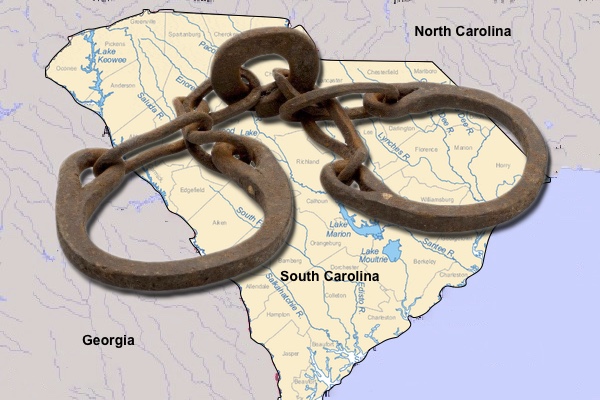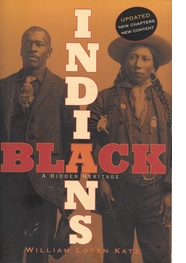The Forgotten First Attempt to Plant a Colony on US Soil

Less than two generations after Columbus landed in 1492, and while his son Diego served as governor of Spain’s New World headquarters on Hispaniola, another Spanish colony was planted in South Carolina, the first on what is now part of the United States. Since its 490 years there has been no official recognition of its appearance or its dramatic story. But its struggles and ultimate fate speak to today’s unresolved racial issues.
In June 1526, Lucas Vásquez de Ayllón, a wealthy Spanish official in the city of Santo Domingo, Hispaniola, founded a colony at or near the mouth of the Pee Dee River in eastern South Carolina. Six decades before Roanoke Island (1587), eight decades before Jamestown (1607), and almost a century before the Mayflower landed at Plymouth Rock (1620), Ayllón began his North American dream.
Ayllón’s effort has been overlooked, perhaps because most people prefer to believe that US life began with the arrival of English-speaking Anglo-Saxons living under British law. Perhaps his settlement is neglected because of its tragic fate— death by mismanagement, disease, and slave revolt. Perhaps it is unmentioned because of its unique rebirth in the woods by people not considered a worthy part of the US heritage.
Ayllón prepared for his great adventure in 1520 by sending Captain Francisco Gordillo to locate a good landing site and build friendly relations with the local inhabitants. The captain instead teamed up with a slave hunter, Pedro de Quexos. While failing to survey a site or build good relations with anyone, the two men captured seventy Native Americans and brought them back to Santo Domingo as slaves. The first European act on what is now US soil was making slaves of free men and women.
The two adventurers returned to Ayllón with enchanting tales of naming a great river in honor of St. John the Baptist and cutting Christian crosses in trees. Ayllón was not impressed with their seizure of seventy Native Americans and brought the issue to the attention of a commission presided over by Diego Columbus. The Indians were declared free and ordered returned, but Spanish records do not show whether the order was carried out.
But they do show that Ayllón, to make amends with the natives who lost their loved ones, sent back the slaver Quexos who started the problem. Once again Quexos returned with other captured natives he this time claimed volunteered to serve as guides for the Spain’s expedition.
Ayllón also retained one of the original seventy, Ferdinand Chicorana, as his New World interpreter. Impressed with his skills and knowledge of the mainland, he brought Chicorana to Spain to meet the king. After this meeting King Ferdinand issued an order permitting Ayllón to sail for the coast of North America. The king’s orders forbade enslavement of Indians, and added “you be very careful about the treatment of the Indians.” Three Dominican missionaries were sent to protect Native Americans from the Europeans.
With this record as a backdrop, Ayllón prepared to launch his expedition to North America. After some delays his fleet of six vessels sailed from Puerto de la Plata. Aboard were five hundred Spanish men and women, one hundred enslaved Africans, six or seven dozen horses, and physicians, sailors, and several Dominican priests.
Mishap and disaster dogged the enterprise as it landed on the wrong coast, lost a ship, and Chicorana deserted. The other Indian interpreters seized by Quexos also fled. The Europeans were on their own.
Determined to succeed, Ayllón drove his people until they came to a great river, which was probably the Pee Dee. Selecting a location in a low, marshy area, Ayllón ordered his men to set up camp. He paused to name his settlement “San Miguel de Gualdape.” When he ordered the Africans to begin building homes, he launched black slavery in the United States.
The neighboring natives fled inland and stayed away. It was probably enough for them that the Europeans who had seized seventy of their loved ones had now returned with Africans in chains.
Europeans, arriving to exploit land and labor, contrasted in many ways with the peaceful natives. The Indians lived harmoniously with nature and shared huge pine, weather-insulated homes that slept about three hundred people each. Europeans tried to construct homes that kept men and women in separate rooms. Europeans wrote that these Indians lived long lives and “their old age is robust.” While European men dominated their women, Indian women doctors served their people plant juices to cure fevers.
While native life moved peacefully ahead, the foreigners slipped toward into crises. Disease and starvation ravaged the colony and internal disputes tore it apart. The river was full of fish, but few Europeans were healthy enough to fish. Then an epidemic swept the settlement and before housing was in place wintery winds blew in. Ayllón became gravely ill and died on October 18, after having named his nephew, Johan Ramirez his successor. But Ramirez was in Puerto Rico, and the leaderless Spaniards split into bitter armed factions.
Men drew swords and marched in howling winds to arrest and sometimes execute those who wished to become leaders of the colony. Some survivors complained that in the midst of their tribulations Africans began setting fires, and Native Americans sided with them and made trouble.
In November a crisis erupted when Africans rebelled and fled to Indian villages. One authority on slave revolts believes the revolt was instigated by Native Americans angry over whites using their land. Africans, used to freedom in their homeland, probably needed no outside prodding to strike for liberty. They understandably fled enslavement in a dying European colony to start new lives in the woods among people who also rejected European enslavement.
The surviving 150 Spanish men and women, no longer able to face a freezing winter without shelter or their labor supply, packed up and sailed back to Santo Domingo. It would be another quarter of a century before Spanish colonists would arrive to build another North American colony with slave labor.
San Miguel de Gualdape was not a total failure as the first foreign colony on US soil. The Europeans left after five months, but Africans remained to build their society with Native Americans. In the unplanned way that history meanders and careens, a new community emerged in the woods – one that also included foreigners from overseas, the Africans. This new mixed Indigenous and foreigner settlement would soon sprout many American models, often called Maroon colonies.
In distant South Carolina forests, two and a half centuries before the Declaration of Independence, two people of color lit the first fires of freedom and exalted its principles. Though neither white, Christian, nor European, they established the first settlement of any permanence on these shores to include people from overseas. They qualify as our earliest inheritance.
There is no way of knowing how long this new settlement remained free of European intervention or how it carried on its life, customs and family survival. Within a century the march of foreign conquest and colonization would spill into their lovely streams and forests. But while this Black Indian community lived, it provided the Americas its earliest example of frontier hospitality, peace, and democratic camaraderie.
Some will mourn the symbolic loss of the white pioneers of Roanoke Island, Jamestown, or Plymouth. But can we not take heart from the daring heritage bequeathed us by the African freedom fighters who fled San Miguel de Gualdape and by the Native Americans who welcomed them in as sisters, brothers and family? The two peoples began a gallant American tradition carried forward by other Americans at Concord Bridge and Valley Forge.
This new community of color says that our vaunted democracy did not march into the wilderness with buckled shoes and British accents. Rather it danced around fireplaces in South Carolina wrapped in dried animal skins and sang African and native songs before any British colonists arrived. South Carolina’s dark democracy lived in family groups before London companies sent out settlers with muskets, Bibles, and concepts of private property.*
The Black Indians of the Pee Dee River in 1526 also became the first settlement on the continent to practice the belief that all people— newcomer and native—are created equal and are entitled to life, liberty, and the pursuit of happiness. Theirs is a story worth remembering and teaching our children.
*The nature and practices of the Black Indian settlements that followed the departure of the Spanish colonists in 1526 need further investigation. Douglas T. Peck, “Lucas Vasquez de Ayllon’s Doomed Colony of San Miguel de Gualdape,” Georgia Historical Quarterly, Summer 2001, details its history under Spanish rule, but not after.
